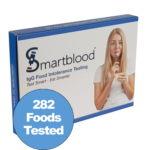We’ve all been there. Tucking into a delicious meal, we overindulge until the waistband is digging into our stomach and the button is ready to pop. That uncomfortable feeling of fullness is a common result of overeating, and generally nothing to be concerned about.
But what if that portion wasn’t super-sized – how can you still feel bloated? It’s not just overeating that can bring on the bloat. Other factors, from diet and eating habits to underlying medical conditions, can cause your stomach to feel tight and swollen.
So, what is bloating?
Bloating happens when you have a build-up of gas in the stomach and intestines. The sensation can range from mild discomfort to sharp, intense pain as the trapped air moves around your abdomen.
You may also notice that your stomach looks distended. This swollen appearance can sometimes be quite extreme.
What causes bloating?
There are many factors which can cause the build-up of excessive gas that leads to bloating, including:
Swallowing too much air. Munching on gum, talking while eating or chewing with your mouth open can all cause you to take in excess air which, when swallowed, can lead to bloating.
Fizzy drinks. Carbonated drinks are a common cause of bloating, thanks to all the bubbles entering your digestive system.
Premenstrual tension (PMS). For many women, bloating is a common and uncomfortable symptom associated with PMS during the monthly menstrual cycle.
Coeliac disease. Approximately 1% of the UK population reportedly suffers with this immune condition, which causes a reaction to gluten. Side effects include bloating, as well as diarrhoea and stomach aches.
Food intolerance. Much more common than coeliac disease, around 45% of the UK population is believed to suffer with a food intolerance. This also isn’t limited solely to gluten, with any food ingredient potentially able to cause problems, such as bloating and other digestive discomforts.
Do some foods cause bloating more than others?
While as individuals we all react differently to foods and drinks, there are definitely some ingredients more likely to produce gas than others.
Common foods that can cause bloating include:
- Beans
- Wheat
- Onions
- Garlic
- Lentils
These are all high FODMAP foods. FODMAPs, which stands for Fermentable Oligosaccharides, Disaccharides, Monosaccharides, and Polyols, are short-chain carbohydrates which are poorly absorbed in the body, resulting in abdominal pain and bloating. They ferment in the large intestine, drawing in water and producing methane, carbon dioxide and hydrogen, causing the abdomen to expand.
How can you treat bloating?
Bouts of bloating can be extremely frustrating, painful and inconvenient and, when an attack is particularly severe, it can take a while for the swelling to subside. If you suffer from recurring bloating, it’s a good idea to speak with a GP to rule out any serious underlying causes. But while you are trying to get to the bottom of the problem, there are steps you can take to relieve the pain of bloating, such as:
Regular exercising. Regular exercise, even gentle walking, helps to keep your digestive tract moving. This can help to relieve constipation and reduce bloating.
Improving your gut health. Taking steps to enhance your gut health may help ward off bloating. Including a good probiotic in your diet can help keep your digestive tract moving, reducing constipation, abdominal pain and bloating.
Can a food intolerance test help?
If you have spoken with a GP to rule out any serious medical conditions that might be causing the bloating, it might be a good time to take a closer look at your diet.
While we might automatically assume that certain foods, like starchy bread and pasta, are the culprit when it comes to bloating, food intolerances are not limited to one food group. Each and every person’s reactions to different foods and drinks vary, and you might be surprised to learn which seemingly neutral foods could be causing you problems.
It’s often recommended, when looking to identify a food intolerance, to try a process called an elimination diet. This involves removing foods, one at a time for a few weeks each, and monitoring how you feel. It’s a systematic approach but it can take a long time. And, since people with food intolerances typically experience reactions to between 2 and 6 foods, it’s easy to miss an ingredient in the process and continue to have problems.
This is where laboratory testing can help. At Smartblood, we offer a comprehensive test to help you take control of your diet quickly and discover your own particular trigger foods.
Our home-to-laboratory service, using ELISA plate testing, gives you fast, accurate results that pinpoint exactly which foods you are reacting to. Tests are completed in our accredited laboratory by trained experts, with clear, easy to understand results sent to you via email within three days.
To help you understand your results, and make healthy and sustainable changes to your diet, the test is supported by a 30-minute telephone consultation with our BANT registered Nutritional Therapist. Armed with all the knowledge you need to take control of your diet, you may find that you can finally say goodbye to bloating.




